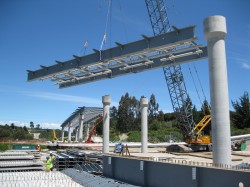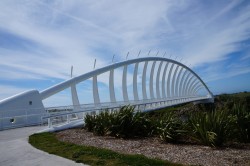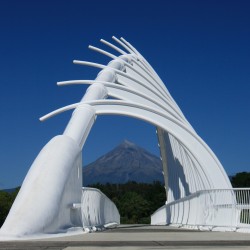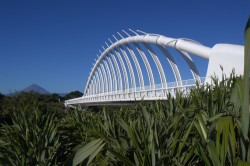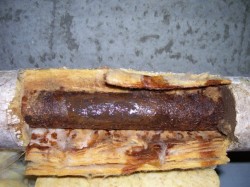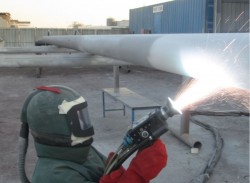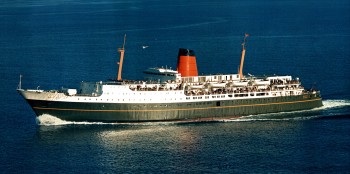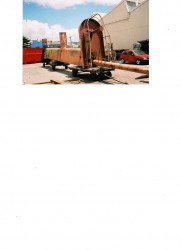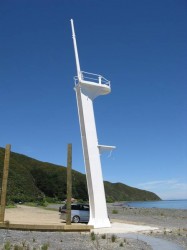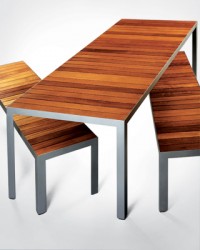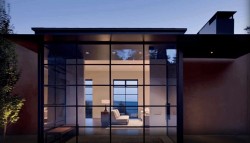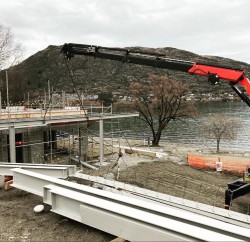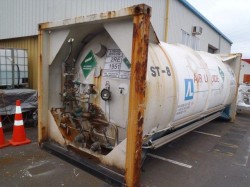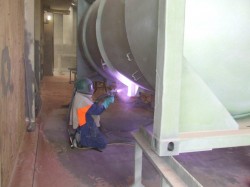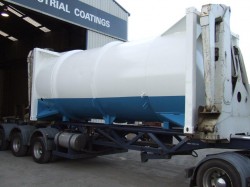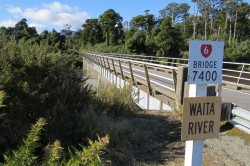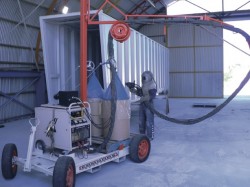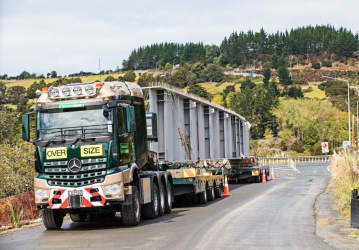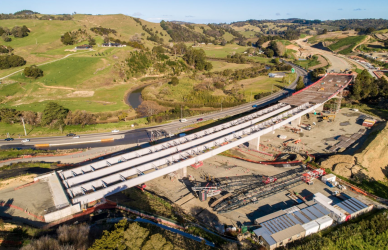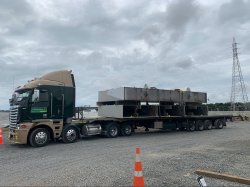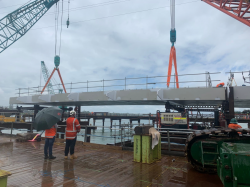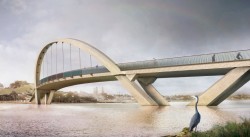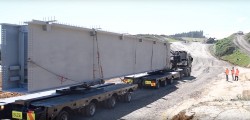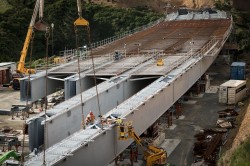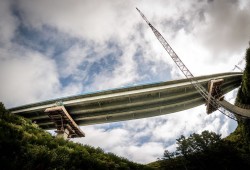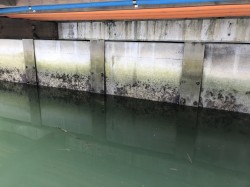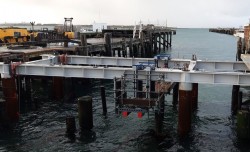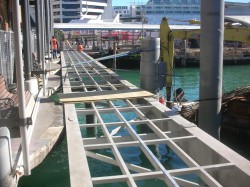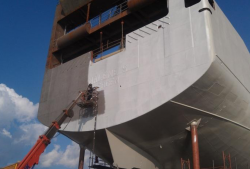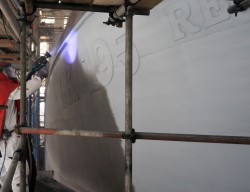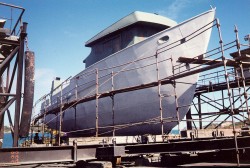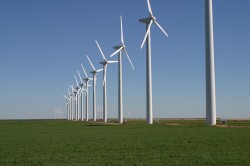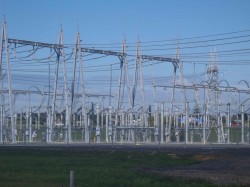Corrosion Protection
Corrosion protection using metal sprayed coatings requires the spraying of an anodic metal in a semi molten form onto abrasive blast cleaned steel. This forms a metallic layer which protects steel from corrosion by both barrier and sacrificial galvanic action. The two most commonly used materials are Zinc, providing galvanic protection sacrificing itself in preference to the steel, and secondly Aluminum which acts as a passive barrier. 85/15 Alloy (85% Zinc, 15% Aluminium) incorporates the best characteristics of both materials and is becoming widely used.
There is no restriction to the size of the structure that can be metal sprayed. No drying time is needed allowing either instant use or the application of sealers and paint systems for safety or aesthetic reasons. There is no limit to maximum coating thickness for the structure to be coated as with hot dip galvanizing although thicknesses above 400 micron of zinc or 250 micron of aluminium are not often specified. Thermal sprayed coatings are the coating of choice for severe marine splash zone and highly corrosive environments offering the highest number of years to first maintenance.
Refer to the relevant Standards, Contact us or view our coating specifications HERE.
Wairakei Bridge - East Taupo Arterial
The Wairakei Bridge is New Zealand’s longest ladder deck bridge at 440m. Not only is it the longest, its 10,000m2 of steel structure has a unique coating of 11 tonnes of thermal arc sprayed pure Aluminium at 220 micron. Applied in 2010 it is the largest application of Aluminium in Australasia and may even be the largest of its kind in the Southern hemisphere. Aluminium provides a protective coating against atmospheric, chemical and high temperature corrosion and specified for this project due to geothermal sulphur emissions nearby. The coating provides the NZTA with the required minimum of 35 years to first major maintenance for this steel bridge.
Te Rewa Rewa
New Plymouth’s award winning Te Rewa Rewa bridge provides a spectacular illustration of the capacity of engineering to combine utility with fine art. The tied arch bridge with a clear span of almost 70 metres is part of the extension of the city’s coastal walkway. The bridge coating is thermal arc sprayed 200 microns of zinc, sealed with an epoxy primer 50 microns, 100 micron of multipurpose off-white epoxy build coat and a white semi-gloss polyurethane.
CUI - NZ Refinery
Corrosion Under Insulation (CUI) is a severe form of localized external corrosion that occurs in carbon and low alloy steel equipment that has been insulated. This form of corrosion occurs when water is absorbed by or collected in the insulation. The equipment begins to corrode as it is exposed to water and oxygen. CUI is common in refineries and process plants that typically operate equipment at high temperatures of up to 550°C. Thermal Spray Aluminium (TSA) coatings are specified by many major oil companies and have been flame sprayed at N.Z Refinery in Ruakaka.
Wahine Mast
The 18 metre forward mast of the ill-fated Inter Island ferry Wahine was kept by the Wellington City Council for decades before being given to the Hutt City Council. Covered in rust and graffiti it was then restored at a cost of $45,000. A 150 micron zinc thermal sprayed coating & paint system was applied and from 2009 it stands on the coast at Korohiwa Bay as a memorial to those lost in 1968.
Residential
Thermal sprayed Zinc coatings for corrosion protection of steel are not only suited to large infrastructure projects but also residential applications such as stair structures, steel windows, beams and outdoor furniture. The options of applying zinc, zinc/aluminium or pure aluminium also provide better protection compared to hot dip galvanising especially in coastal areas. There’s also the opportunity to use different coatings, such as bronze or copper, to fit with the overall design scheme.
Air Liquide - ISO Gas Tank Container
Impact damage caused during regular road, rail and shipping combined with the high chloride environment on vessel decks causes these ISO containers to badly corrode. Ongoing maintenance was at high cost to the company as they were having to repair and repaint them on average once a year. MSS visited the customer to view one of these well travelled units and saw how badly the steel was affected. We designed a coating specification of overall 100 micron of thermal arc sprayed 85/15 (85% Zinc, 15% Aluminium alloy) with 200 micron 85/15 over areas prone to damage. A used ISO gas unit was provided and the duplex coating applied with company colours early 2011. MSS revisited the customer several months later to see how the coating had performed. There were multiple impact damaged areas, most with the paint system totally removed but no signs of corrosion due to the metal sprayed coating there to protect the steel.
Waita River Bridge
Located north of Haast and around 1 Km from breaking surf, the Waita River Bridge was abrasive blasted and recoated in situ with 300 micron minimum 85/15 (85% Zinc, 15% Aluminium alloy) and vinyl sealer in 2006. Recent visits to the site showed the steel bridge coating was in excelent condition confirming the expected lifetime to first maintenance of 40 years or possibly more.
Airbridges
Typically airports are located on the coast and airbridges are exposed to this harsh marine environment. The coating system would have to provide advanced corrosion protection and be visually attractive for decades. The steel structures were grit blasted to SA3 and a Duplex Coating applied consisting of 100 micron Zinc arc spray followed by seal and build coats and low sheen urethane top coat developed to suppress reflection from lights at the airport. These were manufactured and had the coating applied in New Zealand then transported to airports in Wellington, Auckland, Melbourne and Sydney.
Okahu Viaduct - Puhoi
Installed in November 2020 the Ara Tūhono - Pūhoi to Warkworth Motorway Okahu Viaduct bridge beams were thermal sprayed with 300 micron of zinc and a vinyl sealer to provide 40 years to first major maintenance in a C3 Environment.
New Mangere Bridge
The Old Māngere Bridge was more than 100 years old and had come to the end of its life. The NZ Transport Agency replaced the old bridge in 2021 with a new and improved bridge with a layout designed to promote safe and accessible use by a variety of users, including pedestrians, cyclists, recreational users and fishing. Steel deck and arch sections were fabricated and coated with 300 micron 85/15 (85% zinc/15% aluminium alloy) and a sealer then transported to site and welded together into larger sections. Once installed the welded areas are then coated with the metal spray and sealer prior to the structures final top coats. This coating is essential for a steel bridge that will be exposed to sea spray and the harsh weather conditions of the Manukau harbour.
Cannons Creek Bridge - Transmission Gully
Te Ara a Toa, Bridge 20 over Cannons Creek is four lanes wide, 226 metres long and 24.5 metres wide. A total of 44 steel girders, each 1.8m wide and 3m deep make up the framework of the bridge deck which is supported by two abutments and two piers. This steel bridge coating is thermal sprayed zinc 200 micron with vinyl sealer.
Ship Creek Bridge
In 2003 300 micron of thermal sprayed zinc was used to maintain in situ bridge beams over Ship Creek. Adjacent to a West Coast surf beach near Haast, this was the only coating option that could provide 40 years to first major maintenance in a C5-M environment. More recently the standards have been updated to specify the use of 85/15 (85% zinc/15% aluminium alloy).
Marine Environments
Coastal and offshore steel structures are often coated with aluminium arc spray coatings. Opua Marina piles, Southport Bridge, Auckland Ferry Terminal & Queens Wharf.
Ships & Vessels
Thermal sprayed coatings have protected various ships and marine vessels from corrosion. The effectiveness of the zinc coating protects the steel from the harsh sea water environment despite potential damage to the paint system. Used by the U.S, British and Italian Navy.
Energy
Coatings for Windfarm turbine towers, Electricity transmission pylons, Hydroelectric dam gates are amongst some of the applications in the energy sector.
See more projects in our Gallery.

